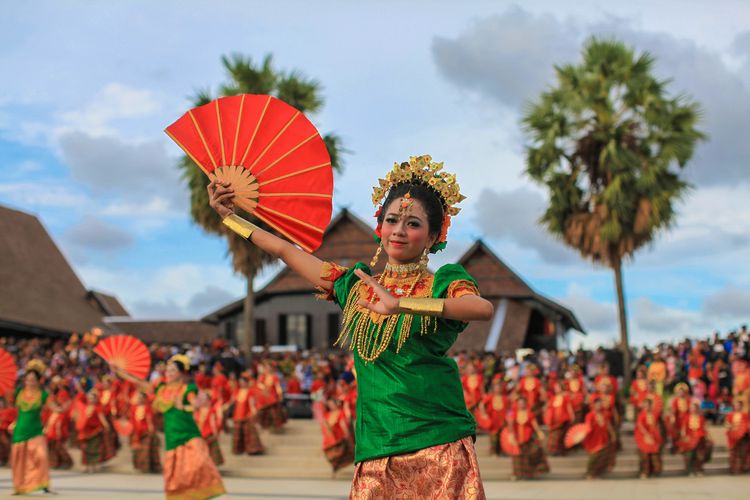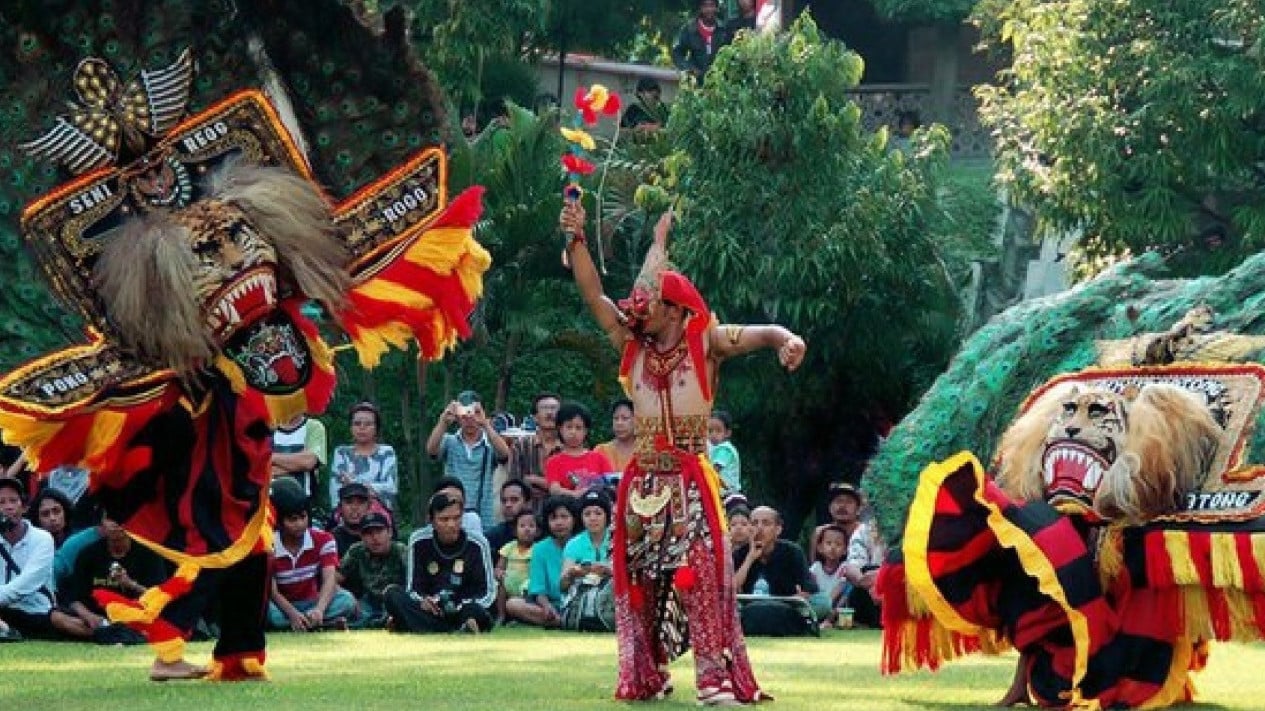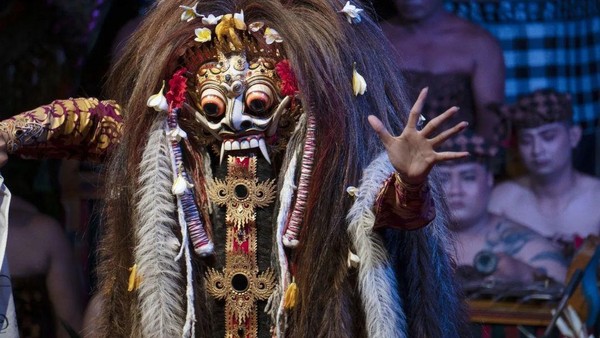 |
| Kipas Dance (Pics: Kompas.com) |
NICETRAVELERS.CYOU - Indonesia, an archipelago of over 17,000 islands, is a land of immense cultural diversity, and one of the most vivid expressions of this diversity is through its traditional dances. These dances, which vary from region to region, are deeply rooted in the country’s history, spirituality, and folklore.
Spanning across the islands of Java, Bali, Sumatra, Kalimantan, Sulawesi, and Papua, each dance tells a unique story, reflecting the values, beliefs, and way of life of the people who perform them. Let's take a journey through some of Indonesia's most iconic traditional dances, from the majestic movements of Java to the dynamic rhythms of Papua.
Java: A Symphony of Grace and Spirituality
Java, the most populous island in Indonesia, is home to several classical dances, many of which are influenced by Hindu-Buddhist traditions, as well as Javanese court culture.
1. The Bedhaya and Serimpi Dances
 |
| Bedhaya and Serimpi dances (Pics: Pinterest) |
Originating from the courts of Yogyakarta and Surakarta, the Bedhaya and Serimpi dances are among the most regal and spiritual of Javanese dances. Bedhaya, often performed by nine dancers, is a slow, graceful dance that symbolizes the spiritual connection between the human and divine.
The dancers move in unison with precise and deliberate gestures, reflecting Javanese ideals of balance, serenity, and harmony. Similarly, the Serimpi dance, which is traditionally performed by four female dancers, embodies the elegance and refinement of Javanese court life. Both dances are accompanied by the mystical sounds of the gamelan orchestra, adding to their spiritual aura.
2. Reog Ponorogo
 |
| Reog Ponorogo (Pics: viva.id) |
In contrast to the court dances, Reog Ponorogo, from East Java, is a vibrant and energetic performance rooted in local folklore. This dance features dramatic masks, including a lion-headed figure known as the Singo Barong, and portrays stories of heroism and struggle.
The performance is known for its acrobatic stunts, including dancers balancing massive lion masks weighing up to 50 kg, symbolizing strength and endurance.
Bali: A Fusion of Art and Ritual
Bali is renowned for its deeply spiritual culture, and traditional dances play a central role in the island's religious and social life. Balinese dances are often performed as offerings to the gods during temple ceremonies and are known for their dynamic, expressive movements.
1. Barong and Rangda
 |
| Barong and Rangda Dance (Pics: detik.com) |
The Barong and Rangda dance is one of Bali’s most famous performances, symbolizing the eternal struggle between good and evil. The Barong, a lion-like creature representing good, battles the wicked witch Rangda in a dramatic and emotional performance. Accompanied by the intense rhythms of the gamelan orchestra, the dancers perform intricate hand and eye movements, a hallmark of Balinese dance.
2. Legong
 |
| Legong Dance (Pics: Tempo.co) |
Another renowned Balinese dance is the Legong, which is characterized by its fast-paced, intricate movements and performed by young girls dressed in elaborate costumes. This dance is traditionally performed in royal palaces and is known for its stylized, almost puppet-like gestures, which are synchronized with the rhythms of the gamelan music.
Sumatra: The Spirit of Community
In Sumatra, traditional dances are deeply connected to community life, often performed during important ceremonies such as weddings, harvests, and religious festivals.
1. Tari Piring (Plate Dance)
 |
| Tari Piring/Plate Dance (Pics: Detik.com) |
From West Sumatra, the Tari Piring or Plate Dance is a spectacular display of agility and skill. Dancers hold plates in their hands and perform rapid, swirling movements without dropping or breaking the plates, all while balancing them gracefully. The dance is said to originate from ancient harvest celebrations and is now performed to express joy and gratitude.
2. Tor-Tor Dance
 |
| Tor-Tor Dance (Pics: batakita.com) |
The Tor-Tor dance of the Batak people in North Sumatra is a ceremonial dance accompanied by the traditional music of the gondang orchestra. Originally performed as part of rituals to communicate with ancestors, the dance is now an important element in weddings and other communal celebrations. The movements are slow and deliberate, often mimicking everyday activities, and are performed in a way that expresses reverence and respect for the community and its traditions.
Sulawesi: Ancestral Roots and Heroism
Sulawesi’s dances are often tied to ancient traditions, focusing on themes of heroism, nature, and spirituality.
1. Maengket Dance
 |
| Maengket Dance (Pics: rri.co.id) |
In North Sulawesi, the Maengket dance is performed by the Minahasa people as part of their traditional agricultural ceremonies. The dance, which involves both men and women, celebrates the rice harvest and the community's connection to nature. It is characterized by simple, rhythmic movements that are performed in unison, symbolizing the unity and strength of the community.
2. Kipas Dance
 |
| Kipas Dance (Pics: Kompas.com) |
From South Sulawesi, the Kipas or Fan Dance is a graceful performance that showcases the elegance and femininity of the Bugis-Makassar women. The dancers use fans as props, performing delicate and fluid movements that mirror the beauty of the natural environment. The dance is often performed at social gatherings and celebrations, highlighting themes of beauty, grace, and hospitality.
Papua: The Rhythm of Nature and Tribal Traditions
In contrast to the more refined dances of Java and Bali, Papua’s traditional dances are raw and powerful, reflecting the island’s tribal cultures and close connection to nature.
1. War Dance (Tari Perang)
 |
| War Dance (Tari Perang) : (Pics: rri.co.id) |
The War Dance, or Tari Perang, is one of the most iconic traditional dances from Papua. This energetic and spirited dance is performed by men, often adorned with elaborate tribal costumes and face paint. The dance mimics the movements of warriors preparing for battle, with strong, aggressive movements symbolizing courage, strength, and unity. The rhythmic drumming and chanting that accompany the dance heighten the intensity and communal energy of the performance.
2. Yospan Dance
 |
| Yospan Dance (Pics: timesmedia.co.id) |
The Yospan dance is a popular social dance in Papua, originating from the fusion of two traditional dances: Yosim and Pancar. It is a lively, joyful dance performed in groups, symbolizing friendship and unity. The dance is characterized by playful, fast-paced footwork and is often performed during festivals or community gatherings, showcasing the joyful spirit of the Papuan people.
Conclusion: A Living Cultural Heritage
Indonesia’s traditional dances are more than just performances; they are a living embodiment of the nation’s rich cultural heritage. From the elegant, spiritual dances of Java to the raw, powerful movements of Papua, these dances not only entertain but also tell stories, preserve history, and strengthen community bonds. In a country as diverse as Indonesia, traditional dance serves as a unifying force, a way for people to connect with their past, celebrate their present, and inspire future generations.
As Indonesia continues to modernize, efforts to preserve and promote its traditional dances remain vital. These performances not only attract tourists but also remind Indonesians of their deep-rooted cultural identity, ensuring that the spirit of these dances will live on for generations to come.







0 Comments